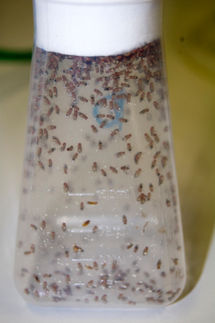Evolutionary kings of the hill use good, bad and ugly mutations to speed ahead of competition
Advertisement
Evolutionary adaptation is often compared to climbing a hill, and organisms making the right combination of multiple mutations – both good and bad – can become the king of the mountain.
A new study published in the Proceedings of the Royal Society B by BEACON researchers at Michigan State University suggests that the combined effect of multiple mutations working together can speed up this process. Through computer simulations, researchers at BEACON, a National Science Foundation-funded Science and Technology Center at MSU, were able to watch evolution play out and see how populations use these combinations to evolve from one adaptive state to another.
Traditional molecular biology approaches allow researchers to look only at so many genes at once. In comparison, computer simulations can process a bigger set of mutations and analyze them consecutively, offering a much more complex and more realistic view of how evolution works in real life, said Bjorn Ostman, postdoctoral researcher at BEACON.
"In reality, many mutations that affect different traits interact with each other, and a single mutation also can affect multiple traits," he said. "Multiple mutations may actually cooperate to give the organism a bigger boost in fitness than the individual mutations would on their own."
Recent evolutionary experiments look at a relatively short period of adaptation where only beneficial mutations occurred. Taking a different approach, Ostman and the team did not focus solely on beneficial mutations. Bad mutations as well as the ones needed to overcome them can actually interact with beneficial mutations to enable organisms to achieve high fitness – being able to survive and reproduce at a high rate – and cross valleys of low fitness, sometimes even accelerating evolution.
"We were able to examine multiple peaks and valleys rather than focus solely on how a population climbs a single peak," Ostman said. "These fitness landscapes simply could not be traversed with mutations that did not interact."






















































